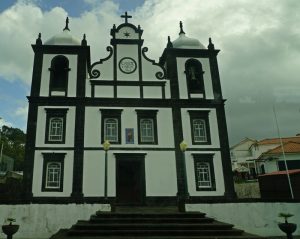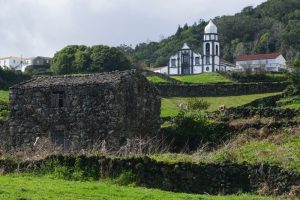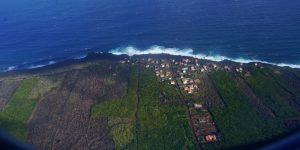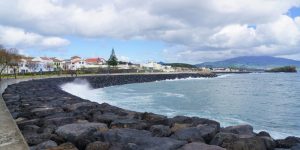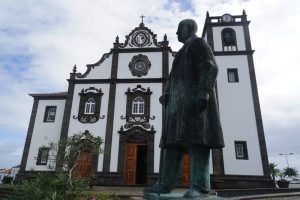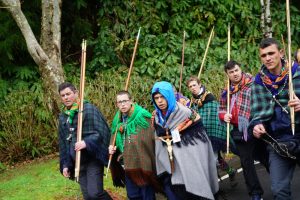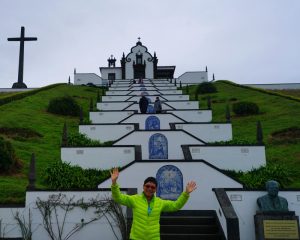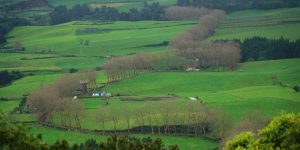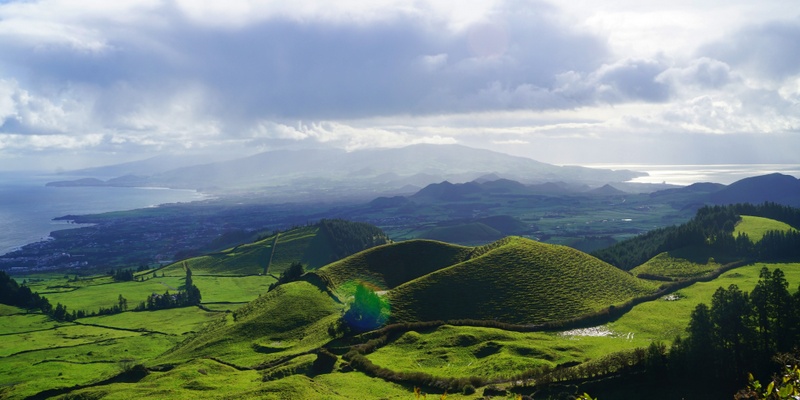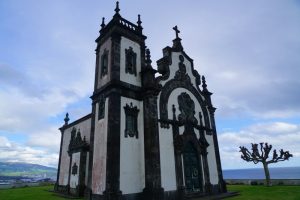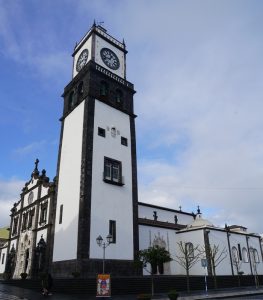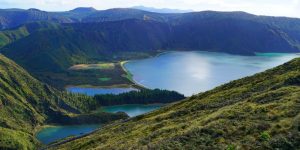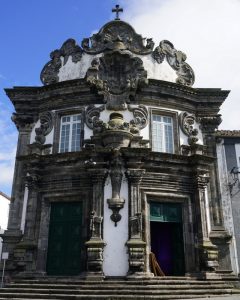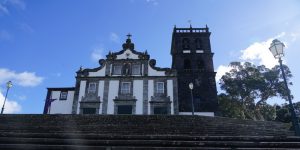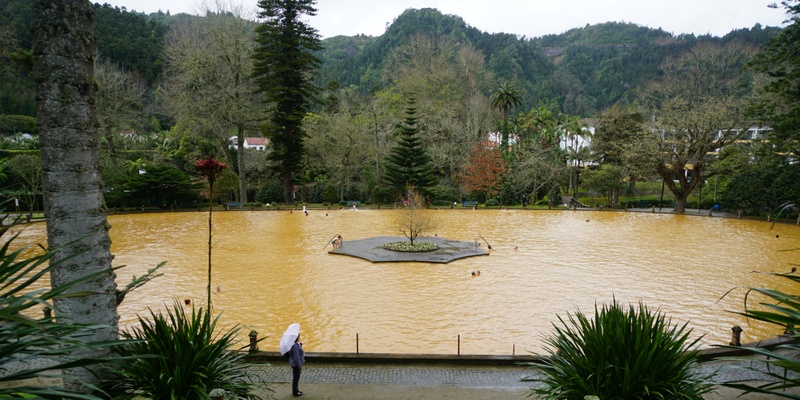Pico & San Miguel February 26 – March 3
February 26 Monday: A Leisure Day & Pico on Bus
I have come to Pico hoping to scale Mt Pico, Portugal’s highest peak. But the weather this year is strange with lots of rain. The mountain has been covered in snow above 1200m. I am a keen but not strong hiker. Hence, a climb seems out of reach!
As the weather forecast was not good, I decided to tour round the island by bus. It is doable but not the best way to enjoy the island. I first took the 7:25am bus to Madalena where I spent over an hour in a nice bakery waiting for the bus going to the southern side of the island.
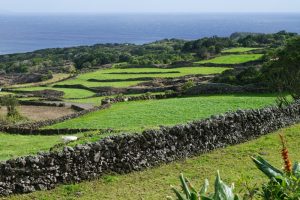
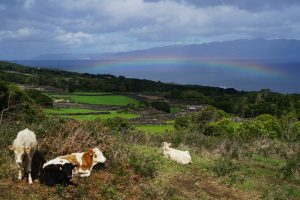 The bus heading to Piedade came after 10:15am. The landscapes are magnificent and different from the northern side. I saw extensive cultivation on the slope and dairy farming close to the sea. There are more settlements along the road. Lajes looks bigger and more picturesque than Sao Roque where I stay. It was 11:40am when I arrived at Piedade. I walked around the sleepy village which has some dairy farms and vineyards. But I dared not wander off too far fearing that I would not get back in time for the 1:30pm bus.
The bus heading to Piedade came after 10:15am. The landscapes are magnificent and different from the northern side. I saw extensive cultivation on the slope and dairy farming close to the sea. There are more settlements along the road. Lajes looks bigger and more picturesque than Sao Roque where I stay. It was 11:40am when I arrived at Piedade. I walked around the sleepy village which has some dairy farms and vineyards. But I dared not wander off too far fearing that I would not get back in time for the 1:30pm bus.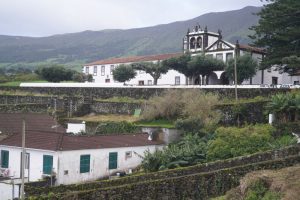
I was the only passenger and the bus driver stopped a few times for me to take pictures. I would love to stop at Santo Amaro and Prainha. I finally got off at Sao Roque at 2:30pm. My round island tour by bus cost me less than 10 euro. But I wished I could have found an organised private tour as in Terceira and Faial. In this way, I would learn more about the island and could stop at places of interest and viewpoints.
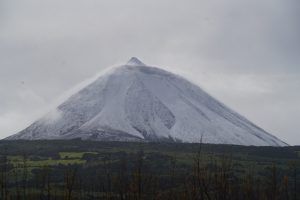 I hoped to find the bar restaurant still open. But it was closed by the time I got there. At the end, I went to a supermarket and bought drumsticks, carrots and unions. I enjoyed my homemade chicken soup! The sky had cleared up suddenly: I took a picture of Mt Pico covered in snow just in time. After a late lunch, I took a short walk near the hostel to look at the coast. Clouds came in and I rushed back to the hostel. Soon, heavy rain arrived. I had a quiet evening by myself in the convent.
I hoped to find the bar restaurant still open. But it was closed by the time I got there. At the end, I went to a supermarket and bought drumsticks, carrots and unions. I enjoyed my homemade chicken soup! The sky had cleared up suddenly: I took a picture of Mt Pico covered in snow just in time. After a late lunch, I took a short walk near the hostel to look at the coast. Clouds came in and I rushed back to the hostel. Soon, heavy rain arrived. I had a quiet evening by myself in the convent.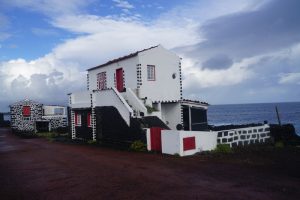
February 27 Tuesday: A Rest Day
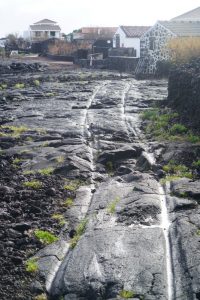 As I could not climb Mt Pico and go to Sao Jorge, I ended up having an extra day in Pico. But without a car, it is not easy to do much. I therefore decided to take a walk from Santa Luzia to Lajido to look at Pico’s unique vineyard landscape.
As I could not climb Mt Pico and go to Sao Jorge, I ended up having an extra day in Pico. But without a car, it is not easy to do much. I therefore decided to take a walk from Santa Luzia to Lajido to look at Pico’s unique vineyard landscape.
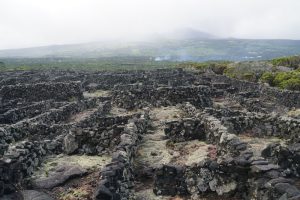 It was raining heavily at 9am when I left the hostel. I held my hand up and a young lady kindly offered me a lift. Instead of dropping me off at Santa Luzia by the main road, she drove me to the coast by Lajido. The area is pretty with many traditional houses, most of which are holiday homes with Mount Pico as the backdrop.
It was raining heavily at 9am when I left the hostel. I held my hand up and a young lady kindly offered me a lift. Instead of dropping me off at Santa Luzia by the main road, she drove me to the coast by Lajido. The area is pretty with many traditional houses, most of which are holiday homes with Mount Pico as the backdrop.
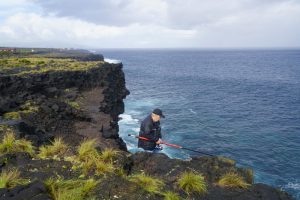 It continued to rain most of the time. The village after Lajido is Acros. At Sao Mateus, a man arrived with his fishing gear. Pedro, a native from the island and a resident in Canada since 1964, keeps a house in Arcos and has a vineyard which produced 300kg of grapes last year. It is great to talk with a local who shares his life experience as an islander and emigrant. I watched him fishing: he caught six sorgo within half an hour. He insisted giving me two for lunch. It started to rain heavily. Pedro was kind and gave me a lift to the hostel! Islanders are lovely!
It continued to rain most of the time. The village after Lajido is Acros. At Sao Mateus, a man arrived with his fishing gear. Pedro, a native from the island and a resident in Canada since 1964, keeps a house in Arcos and has a vineyard which produced 300kg of grapes last year. It is great to talk with a local who shares his life experience as an islander and emigrant. I watched him fishing: he caught six sorgo within half an hour. He insisted giving me two for lunch. It started to rain heavily. Pedro was kind and gave me a lift to the hostel! Islanders are lovely!
I had a wonderful lunch: the fish was fresh and most delicious! I spent the afternoon in the sitting room looking at the sea and Sao Jorge while typing my travel notes. A rest day is always good for planning and recharging: not exciting but fruitful and relaxing.
February 28 Wednesday: Pico – Sao Miguel by Air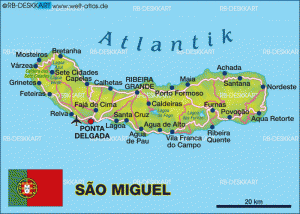
S Miguel (also known as the “Green Island”), is the largest and most populous island in the Azores with an area of 760km2 and a population of some 150,000 inhabitants. It was the second island in the Azores discovered by Goncalo Velho Cabral in 1427 and settlers first settled at Povoacao Velha. The first capital of the island was Vila Franca do Campo which was devastated by the 1522 Vila Franca earthquake and landslides. Ponta Delgada became the administrative and economic status of capital and business centre from 1546.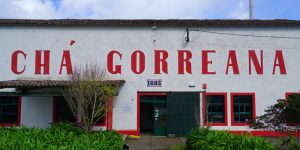
The island prospered from mid-17th century onward as a commercial centre with new contacts in Brazil. Substantial revenues also came from the export of oranges, mainly to Great Britain, and later cash crops such as tea, pineapple and tobacco and from the fishing industry. Today, Ponta Delgada with 45,000 inhabitants, is the economic, social and political centre of the Azores.
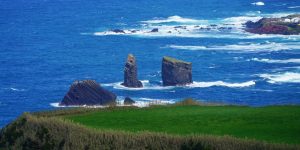 The island comprises six volcanic zones. From west to east these zones are: the Sete Cidades Massif, a field of alkali-basalt cinder cones and lava flows, the Aqua de Pau Massif, another field of alkali-basalt cinder cones and lava flows, Furnas and the Nordeste shield. The peak area between Sete Cidades and Fogo is a monogenetic volcanic field composed of 270 volcanoes. It is estimated that 19 eruptions have occurred during the last 3,000 years. The most famous one is known as Fogo 2, occurring in 1652. The highest point of the island is Pico da Vara at 1,107m in the Nordeste.
The island comprises six volcanic zones. From west to east these zones are: the Sete Cidades Massif, a field of alkali-basalt cinder cones and lava flows, the Aqua de Pau Massif, another field of alkali-basalt cinder cones and lava flows, Furnas and the Nordeste shield. The peak area between Sete Cidades and Fogo is a monogenetic volcanic field composed of 270 volcanoes. It is estimated that 19 eruptions have occurred during the last 3,000 years. The most famous one is known as Fogo 2, occurring in 1652. The highest point of the island is Pico da Vara at 1,107m in the Nordeste.
I took a taxi at 8:45am (15 euro) and arrived at the airport at 9:15am. The plane departed an hour later. While waiting, I had an engaging discussion with the wine shop operator about the development of tourism and the local economy. I expressed my frustration over the difficulties for a solo traveller without a car to travel around the island especially in fowl weather. There is no tour while the local bus runs only twice a day. We agree that there must something the local tourism promoters and operators can do to better serve visitors and promote the local economy in the low season.
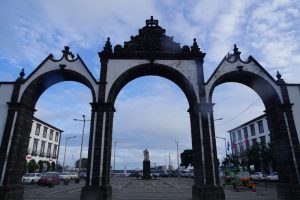 After lunch, I spent the next two hours trip hunting. I went to four agents before finding LMJC that could offer me two full-day and one half-day trips for 169 euro. Apparently, they had a German couple who had booked three trips.
After lunch, I spent the next two hours trip hunting. I went to four agents before finding LMJC that could offer me two full-day and one half-day trips for 169 euro. Apparently, they had a German couple who had booked three trips.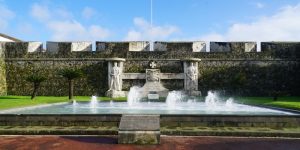
It was after 4pm when I was in the mood to stroll around. The weather was bad with heavy shower. I walked to the end of the promenade and reached the Fortress of S Bras. Though I had no urge to go in, the weather was gloomy and the solider at the gate was welcoming. I therefore spent three euro to go in. There are some 15 exhibition rooms with exhibits well presented. But unless one is keen about military history, one can give it a miss.
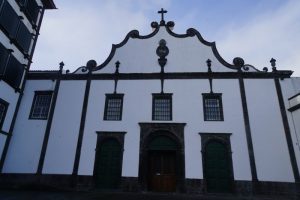
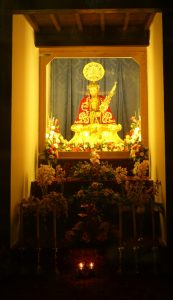 The rain stopped when I came out. Opposite the fortress is a large square where the Convent and Chapel of Esperanca (Our Lady of Hope) stands. I saw an exquisite wooden image of Christ in a Renaissance-style representation of the Ecce Homo representing the episode when Jesus was presented to the crowd following his whipping. On the fifth Sunday after Easter every year, this statue leads a process through the streets of Ponta Delgada. Thousands of Azoreans come from various islands for this event. I am struck by the beauty of the image, the white-blue titles on the walls and the atmosphere of this small chapel.
The rain stopped when I came out. Opposite the fortress is a large square where the Convent and Chapel of Esperanca (Our Lady of Hope) stands. I saw an exquisite wooden image of Christ in a Renaissance-style representation of the Ecce Homo representing the episode when Jesus was presented to the crowd following his whipping. On the fifth Sunday after Easter every year, this statue leads a process through the streets of Ponta Delgada. Thousands of Azoreans come from various islands for this event. I am struck by the beauty of the image, the white-blue titles on the walls and the atmosphere of this small chapel.
It was drizzling and chilly. I walked about two kilometres to get back to the house with a brief stop at the market which was closing. I bought fresh pork, union and mushroom and made a nice pasta. I was tired after a long day and slept before 9pm.
March 1 Thursday: Full Day Nordeste Excursion
Guida, the guide-cum-driver, picked me up at 9am. I was pleased to meet Heidrun and Franc. We drove to the north coast via a modern highway completed a few years ago. We however did not stop at Ribeira Grande (the second largest city) as we would visit it on Saturday.

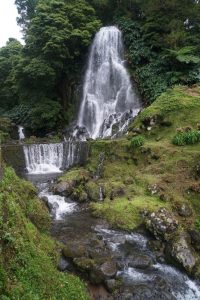 Our first stop was at a lookout point at Gramas on the old country road. We had fantastic views of Ribeira Grande and the northern coast. I could see Ponta do Ermo, a nature reserve area with an old lighthouse.
Our first stop was at a lookout point at Gramas on the old country road. We had fantastic views of Ribeira Grande and the northern coast. I could see Ponta do Ermo, a nature reserve area with an old lighthouse.
We had a coffee stop at Mata Jardim do Dr Fraga, a nature reserve with waterfall and preserved water-mills. I particularly enjoyed the drive along the old road lined with beautiful mature trees.
It was around mid-day when we arrived at Vila de Nordeste, the town at the eastern end of the island. It was isolated before the completion of the highway. The major attraction in this sleepy town is the Sao Jorge Church dating back from 15th century.
We had two more photo-stops at Ponta do Sassego and a peaceful garden overlooking the rugged coastline and cliffs.
Before descending to Povoacao where the Portuguese first landed on the island in 1427, we stopped at a viewpoint with splendid views of the Povoacao volcano complex dotted with half a dozen villages. The landscape and scenery are beautiful.
We had lunch in a popular restaurant in Povoacao. The main course was beef and chicken cooked in oven. The meat was tasty but the portion was too big. After lunch, we were given 20 minutes to stroll around.
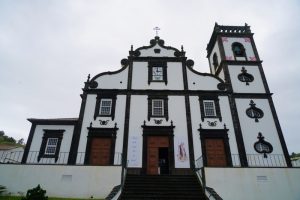 I went to the Nossa Senhora das Victorias Chapel built in Gothic style and took a second look at the monument marking the point where the first settlers landed.
I went to the Nossa Senhora das Victorias Chapel built in Gothic style and took a second look at the monument marking the point where the first settlers landed.
We drove through the valley of Furnas before descending to Vila Franca do Campo, the first capital on the island. We did not have time to stop.
Instead, Guida took us to see the Our Lady of Peace Church located on a hill top which affords panoramic views of Vila Franca do Campo and the surrounding area. I climbed a picturesque staircase which represents Our Father and Joyal/Sorrowful Mysteries prayer. Built in 1967, the staircase with 100 steps is separated into ten flights to symbolize the Ave Maria prayer.
By the time I got back to the van, it started to rain heavily. It was after 6pm when Guida dropped me off. I spent the evening working on my website.
March 2 Friday: Half Day Trip to Sete Cidades (Seven City)
Today’s highlights are the Sete Cidades volcano occupying an area of approximately 110 km2and Sete Cidades, a civil parish with 800 inhabitants located in the centre of a massive volcanic crater. The former refers to the Sete Cidades Massif (a polygenetic volcano) and caldera which is almost circular measuring 5km in diameter and up to 400m high walls. There are two crater lakes referred to by the colour of the waters: blue reflecting the sky and green reflecting the ground.
The weather was fine when we set off at 9am. At the first viewpoint near Carvao, we had a fantastic view toward east with many ranges of volcano complexes lit up in morning rays while those in the far eastern end had a light veil of mist.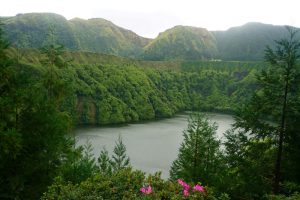
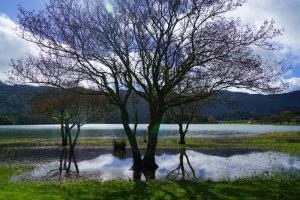 On the way to the rim, we had a couple of stops looking at Lagoa de Sao Tiago, the rim, the twin lakes and Sete Cidades. The landscape is breath-taking. There are several hiking trails of different levels of difficulties. I believe hiking is the best way to fully appreciate its grandeur and beauty.
On the way to the rim, we had a couple of stops looking at Lagoa de Sao Tiago, the rim, the twin lakes and Sete Cidades. The landscape is breath-taking. There are several hiking trails of different levels of difficulties. I believe hiking is the best way to fully appreciate its grandeur and beauty.
We had a leisure coffee break by the blue lake. Instead of having a coffee, I spent my time by the lakeshore staring at the ever changing hues of the lush vegetation, the gorgeous rim, reflections in the lake and the magnificent landscape. Sete Cidades is a paradise!
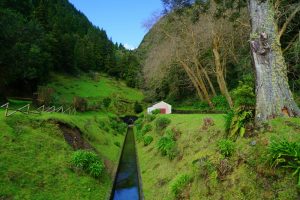
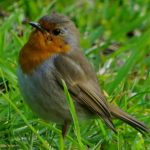 Guida drove us to see a 1.5km-long tunnel built in 1937 to drain water to the north when the lake’s water level reaches certain level. Otherwise, the parish would be flooded. I was sad to leave and would love to return one day to spend a few days here.
Guida drove us to see a 1.5km-long tunnel built in 1937 to drain water to the north when the lake’s water level reaches certain level. Otherwise, the parish would be flooded. I was sad to leave and would love to return one day to spend a few days here.
We drove to Ponta do Escalvado, an excellent viewpoint for Ponta dos Mosteiros and Ilheu dos Mosteiros, three iconic rocks dotting the coastline.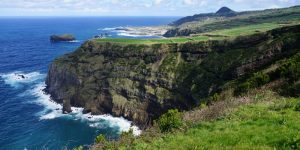
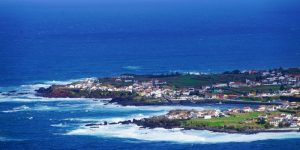 We returned to Ponta Delgada passing through Ginetes, Feteiras and Relva. Our last stop was a pineapple plantation where small pineapples are planted in greenhouses for 24 months before harvest. A surprisingly interesting and educational visit! This plantation reminds me the perfectionist approach of the Japanese.
We returned to Ponta Delgada passing through Ginetes, Feteiras and Relva. Our last stop was a pineapple plantation where small pineapples are planted in greenhouses for 24 months before harvest. A surprisingly interesting and educational visit! This plantation reminds me the perfectionist approach of the Japanese.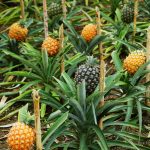
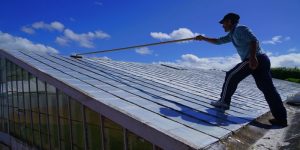
I was dropped off just before 2pm. I went to a well-known seafood restaurant near Casa da Ilha and ordered barnacle as starter and a grilled grouper and rice as the main course. Unfortunately, the barnacle is nothing compared with those I had in Galicia last September. The fish was OK but not excellent. The rice cooked with vegetables in a clay pot was surprisingly good. There must be three bowls of rice in the pot. I had an amazing appetite and finished the last grain in the pot. I was not starved but did not want to waste food. I skipped dinner.
After a big meal, I spent two hours strolling in town. I walked uphill to reach the Chapel of Mae de Deus, returned to the Igreja Sao Pedro and the City Gate to take a photo and went to the exquisite Sao Sebastiao Main Church built in the 16th century with architectural features in Late Gothlic and Manueline styles. The interior is embellished by the altar of Nossa Senhora do Rosario.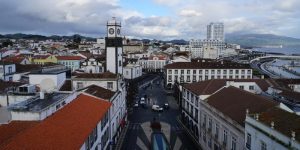
Nearby the cathedral is the City Tower built in 1724. I was energetic enough to climb 106 steps to reach the top of tower for a panoramic view of the city. Worth the efforts.
It started to rain heavily. I bought an umbrella which cost less than three euro to keep myself dry. I spent a peaceful evening uploading photos.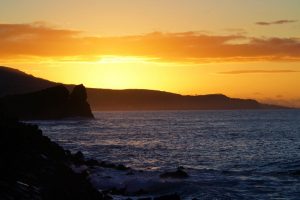
March 3 Saturday: Full Day Excursion to Lagoa da Fogo & Furnas
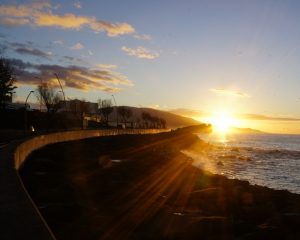 I got up early and watched a beautiful sunrise around 7:15am near the house. The weather changed very fast and rained heavily. I started to worry about our excursion today. Fortunately, by the time Guida arrived at 9am, we were met with blue sky and sunshine.
I got up early and watched a beautiful sunrise around 7:15am near the house. The weather changed very fast and rained heavily. I started to worry about our excursion today. Fortunately, by the time Guida arrived at 9am, we were met with blue sky and sunshine.
As the weather was unstable, Guida rushed us to Lagoa da Fogo. From the viewpoint close to the top, we could see the island with its countless volcano cones and the boundless Atlantic Ocean. But the temperature dropped to 5 degree here. With the wind chill effect, it was freezing.
On the way down, we passed the Monumental Natural da Caldeira Velha which is another popular hot spring area. In this area, there are several geo-thermal plants. According to Guida, geo-thermal energy now meets 42% of the power need of the island. In future, the ratio will be raised to 60%. Perfect to make use of green and clean energy!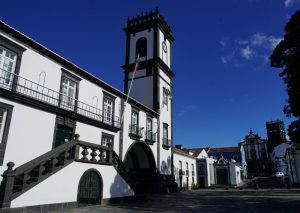
Soon we arrived in Ribeira Grande, the second largest city on the island. This town which once produced oranges had been very rich. Its fortune of the city declined when the orange plants were ruined by bacteria. The Main Church, one of the oldest churches on the island, was closed. We had a coffee break in the main square.
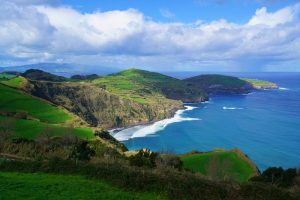 Before leaving, I had a quick glimpse of Baroque Church of Espirito Santo which interior looks rich with lots of flowers.
Before leaving, I had a quick glimpse of Baroque Church of Espirito Santo which interior looks rich with lots of flowers.
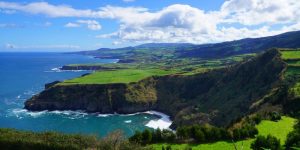 We had a quick photo stop at the Santa Iria lookout which affords the most fantastic views of Ponta do Ermo and Ponta do Cintrao with a lighthouse on the left and the coast line to the east.
We had a quick photo stop at the Santa Iria lookout which affords the most fantastic views of Ponta do Ermo and Ponta do Cintrao with a lighthouse on the left and the coast line to the east.
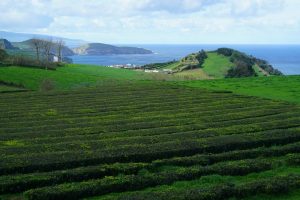 The last stop in the morning was the tea factory at Gorreana – the only one remains on the island. To replace the orange as the cash crop, the islanders tried to grow tobacco, pineapples and tea. The owner of the factory had engaged two Chinese to help develop the tea plantation. Guida walked us through the factory explaining the process of turning leaves into consumable green and black tea.
The last stop in the morning was the tea factory at Gorreana – the only one remains on the island. To replace the orange as the cash crop, the islanders tried to grow tobacco, pineapples and tea. The owner of the factory had engaged two Chinese to help develop the tea plantation. Guida walked us through the factory explaining the process of turning leaves into consumable green and black tea.
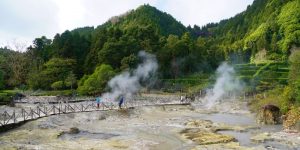
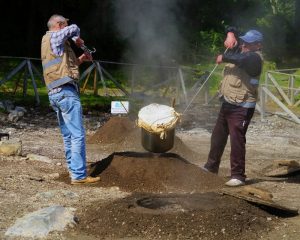 We arrived in the Lagoa das Furnas shortly after 12 noon. The Volcanic Complex of Furnace is exceptionally beautiful.
We arrived in the Lagoa das Furnas shortly after 12 noon. The Volcanic Complex of Furnace is exceptionally beautiful.
The central caldera is a naturally explosive trachyte structure composed of two main calderas. The western of the two calderas is partially filled by a crater lake, Lagoa das Furnas, at an elevation of 359m and populated by several fumaroles and mud pools located at the northern part of the lake. It is at this area that local restaurants cook meat and vegetables in big pots in the ground for six hours. Visitors come to watch the pots being lifted from the ground.
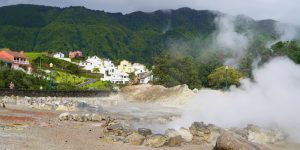
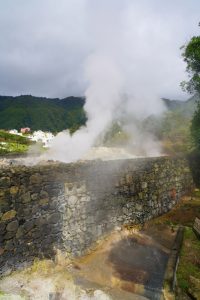 We went to a restaurant to sample the food cooked in this special way. Alas, my German friends and I were speechless when our food was placed on the table. There was enough meat (beef, chicken, pig knuckle and sausage) and vegetables (cabbage, carrot, potato, sweet potatoes and yam) to feed six to eight people.
We went to a restaurant to sample the food cooked in this special way. Alas, my German friends and I were speechless when our food was placed on the table. There was enough meat (beef, chicken, pig knuckle and sausage) and vegetables (cabbage, carrot, potato, sweet potatoes and yam) to feed six to eight people.
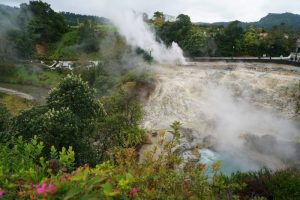 It was raining when we were on the way to the Furnas Caldeiras located in the central part of the village. I have seen similar features in Japan, Iceland, New Zealand and Kamchatka, Russia. But I was not prepared for what I saw: springs and geysers are prevalent. There are some 30 springs, each of different temperatures and chemical compositions including warm iron-rich streams and piped examples of mineral rich warm and cold water. It’s fun to taste the water from three springs. I bought “bolos levedos” a local speciality that tastes like sweet muffin.
It was raining when we were on the way to the Furnas Caldeiras located in the central part of the village. I have seen similar features in Japan, Iceland, New Zealand and Kamchatka, Russia. But I was not prepared for what I saw: springs and geysers are prevalent. There are some 30 springs, each of different temperatures and chemical compositions including warm iron-rich streams and piped examples of mineral rich warm and cold water. It’s fun to taste the water from three springs. I bought “bolos levedos” a local speciality that tastes like sweet muffin.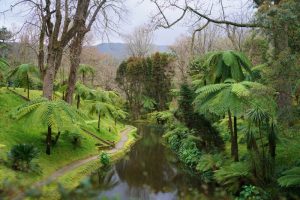
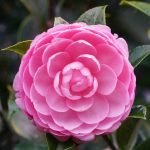 Our final stop was the Terra Nostra Garden dating back to 1775. The garden with an area of 12.5 Ha is a treasure with a big collection of endemic species and camellia, a cycads garden, a fern garden, a vireya garden and a garden of annual flowers and plants. Its major attraction is the enormous thermal pool with water about 37degree. We soaked in the pool for over half an hour. When we came out of the pool around 4:30pm, it rained heavily again. Soon, we heard thunder and saw lightning with torrential rain pouring down. Then hails came down for some 15 minutes! It was most scaring! Guida drove carefully. By 5:30pm, the sky cleared up and the rain stopped.
Our final stop was the Terra Nostra Garden dating back to 1775. The garden with an area of 12.5 Ha is a treasure with a big collection of endemic species and camellia, a cycads garden, a fern garden, a vireya garden and a garden of annual flowers and plants. Its major attraction is the enormous thermal pool with water about 37degree. We soaked in the pool for over half an hour. When we came out of the pool around 4:30pm, it rained heavily again. Soon, we heard thunder and saw lightning with torrential rain pouring down. Then hails came down for some 15 minutes! It was most scaring! Guida drove carefully. By 5:30pm, the sky cleared up and the rain stopped.
Around 6pm, Guida dropped us off. It was sad to say good-bye to my German friends without whom I could not have done the three trips. I started to pack and went to bed early as I would be departing for the airport at 5:30am the next day.



